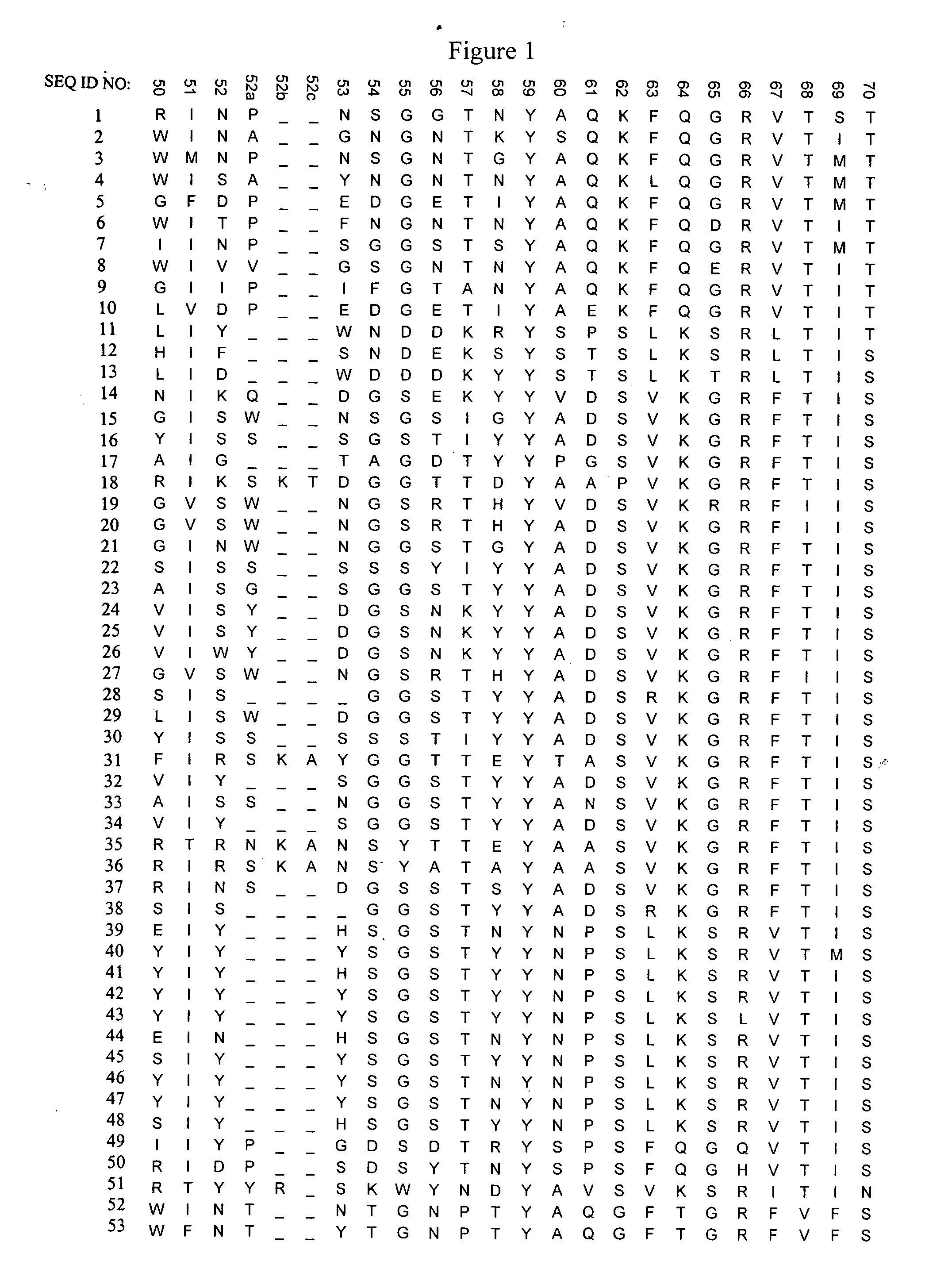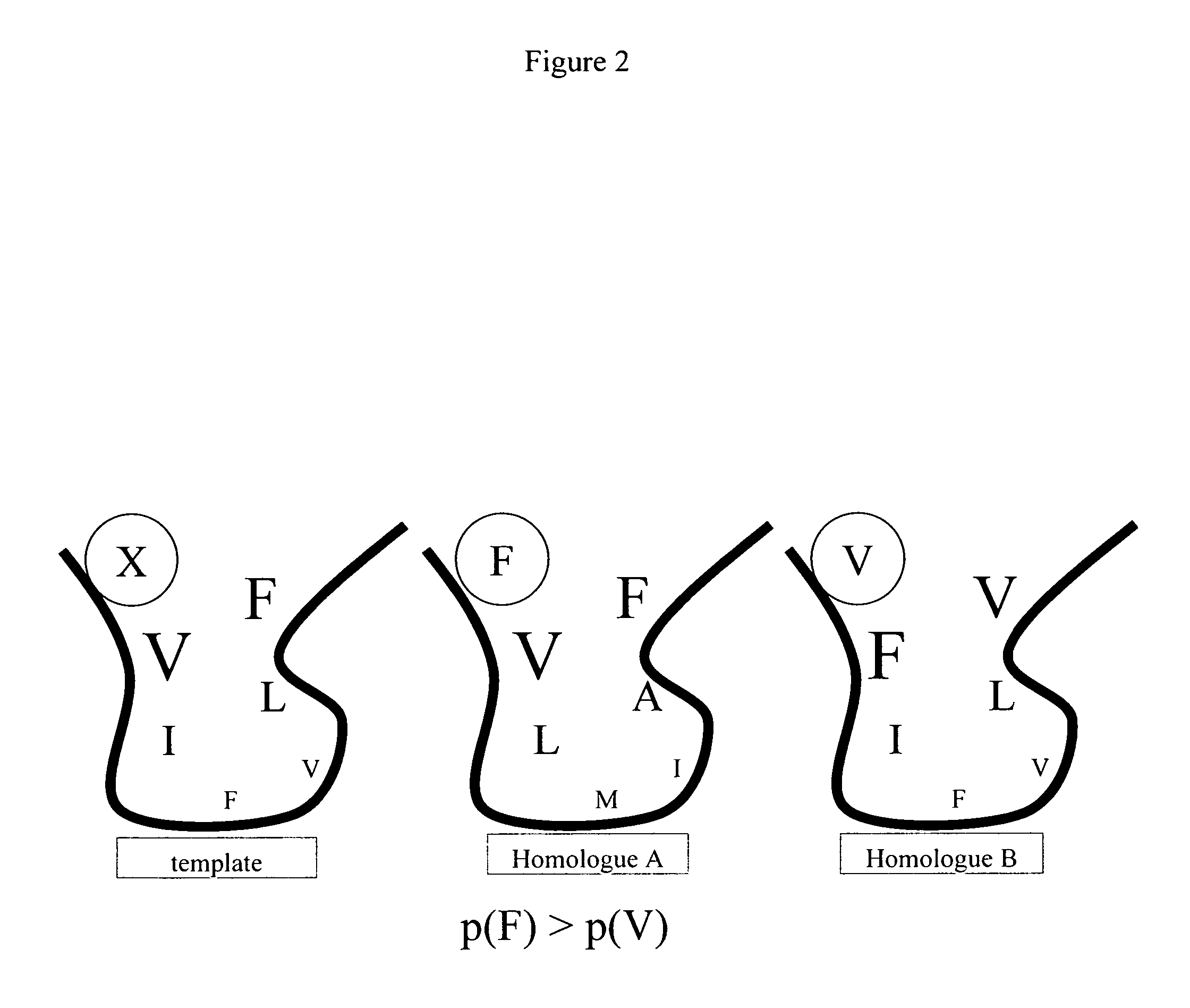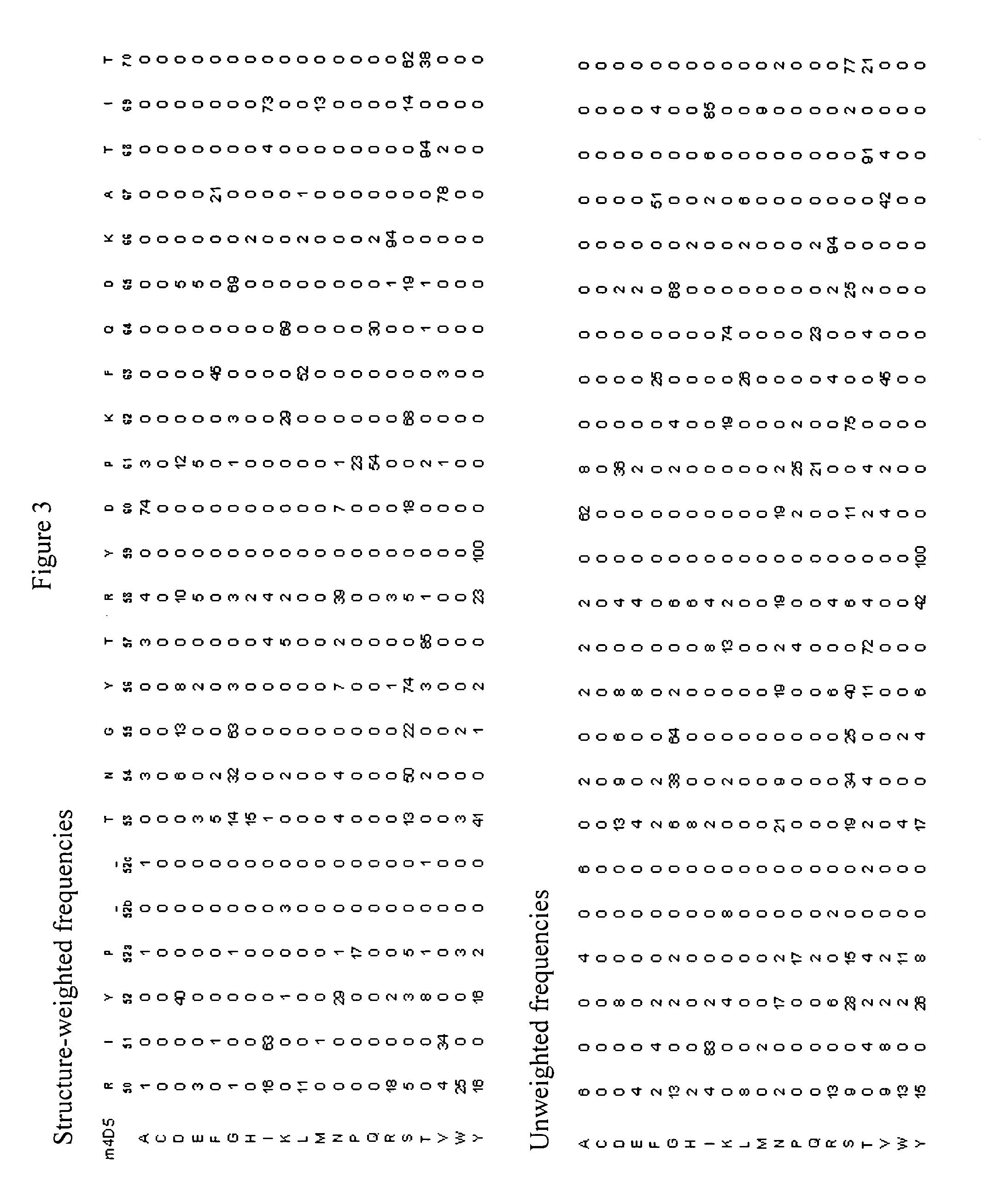Protein engineering with analogous contact environments
a technology of contact environment and protein, applied in the field of engineering protein sequences, can solve the problems of often failing strategy and unfavorable related protein, and achieve the effect of improving the stability and stability of the protein
- Summary
- Abstract
- Description
- Claims
- Application Information
AI Technical Summary
Benefits of technology
Problems solved by technology
Method used
Image
Examples
example 1
[0163] Human Heavy Chain Sequences
[0164] The antibody heavy chain sequences were be aligned and used with an existing structure as input into the present invention. FIG. 8 shows the structure of Herceptin® (trastuzumab) (Genentech / Biogenldec) (PDB code 1FVC) and proximity values determined by an embodiment of the present invention. The left panel shows proximities values determined when position 29 is designated as the reference position or patch. The amino acid of position 29 in the reference structure is shown as a non-spherical surface. The remaining positions in the protein, the environment positions, are shown as a spheres positioned on their CA positions in the structure. The volumes of the spheres are proportional to their proximities to position 29. Larger sphere indicate more proximal environment positions, which are weighted more strongly in the determination of the structure-weighted frequency, resim and precedence scores. The right panel shows the proximity values deter...
example 2
[0165] Sequence Weight Determination
[0166] An alignment of human heavy chain germline sequences, the reference sequence, m4D5, and the structure, PDB code 1FVC, was used to determine the sequence with the most suitable environment around each position in the multiple sequence alignment (MSA). FIG. 9 shows the sequence weights calculated with equation 3 using a temperature (T) value of 1, the BLOSUM62 (Henikoff J. G. Proc. Nat Acad. Sci USA 89:10915-10919 (1992), incorporated by reference) similarity matrix (eq. 2) and a δ value of 5 (eq 1). FIG. 9 illustrates how the similarity of each sequence to the reference sequence depends upon the position given as a reference position. For example, the environment around position 50 is the most similar (similarity score=0.22) in sequence vh—1-45 to the reference environment of all the listed sequences.
example 3
[0167] Patch Mode—Multiple Residues Considered.
[0168] The methods of the present invention are useful in patch mode to determine the best environment in which to place a patch of amino acids, or to determine the best patch of amino acids to place into a particular environment. A template structure and a multiple sequence alignment comprising the sequence of the template structure are input as are a list of residue positions defining the patch. FIG. 10 shows the distance-dependant resim scores determined using a multiple sequence alignment of antibody Fc domains and an Fc structure, PDB code 1DN2. The multiple sequence alignment used was generated with BLAST (Altschul, S. F., et al. (1990) J. Mol. Biol. 215:403-410, incorporated by reference) using the sequence of the human IgG1 Fc domain as input. The multiple sequence alignment contained 249 positions (residues plus gaps) and 137 sequences including the sequence of the template structure. Henikoff weights (Henikoff & Henikoff, 199...
PUM
| Property | Measurement | Unit |
|---|---|---|
| Lattice constant | aaaaa | aaaaa |
| Volume | aaaaa | aaaaa |
| Fraction | aaaaa | aaaaa |
Abstract
Description
Claims
Application Information
 Login to View More
Login to View More - R&D
- Intellectual Property
- Life Sciences
- Materials
- Tech Scout
- Unparalleled Data Quality
- Higher Quality Content
- 60% Fewer Hallucinations
Browse by: Latest US Patents, China's latest patents, Technical Efficacy Thesaurus, Application Domain, Technology Topic, Popular Technical Reports.
© 2025 PatSnap. All rights reserved.Legal|Privacy policy|Modern Slavery Act Transparency Statement|Sitemap|About US| Contact US: help@patsnap.com



